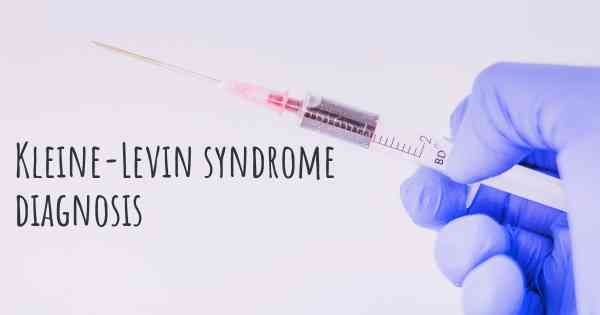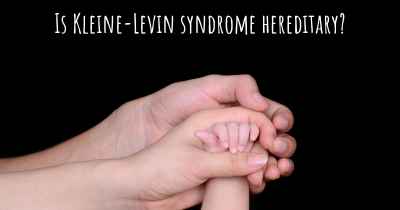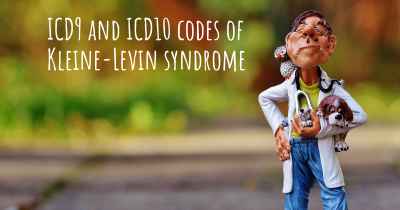How is Kleine-Levin syndrome diagnosed?
See how Kleine-Levin syndrome is diagnosed. Which specialists are essential to meet, what tests are needed and other useful information for the diagnosis of Kleine-Levin syndrome

Diagnosing Kleine-Levin Syndrome
Kleine-Levin Syndrome (KLS), also known as "Sleeping Beauty Syndrome," is a rare neurological disorder characterized by recurring episodes of excessive sleepiness and altered behavior. Diagnosing KLS can be challenging due to its rarity and the similarity of symptoms to other conditions. However, a comprehensive evaluation involving medical history, physical examination, and specific diagnostic tests can help confirm the presence of KLS.
Medical History
The first step in diagnosing KLS is obtaining a detailed medical history from the patient and their family. The doctor will ask about the frequency, duration, and characteristics of the episodes, as well as any associated symptoms. It is crucial to rule out other potential causes of excessive sleepiness, such as sleep disorders, psychiatric conditions, or medication side effects.
Physical Examination
A thorough physical examination is essential to identify any physical signs or abnormalities that may be associated with KLS. The doctor will assess the patient's neurological function, including reflexes, coordination, and sensory responses. They may also examine the patient's eyes for any abnormalities that could indicate underlying neurological issues.
Sleep Studies
Sleep studies, also known as polysomnography, are crucial in diagnosing KLS. These studies involve monitoring the patient's sleep patterns, brain activity, eye movements, heart rate, and breathing during sleep. The data collected from sleep studies can help identify any abnormalities in sleep architecture and rule out other sleep disorders that may mimic KLS symptoms.
Multiple Sleep Latency Test (MSLT)
The Multiple Sleep Latency Test is another diagnostic tool used to evaluate excessive daytime sleepiness. It measures the time it takes for a person to fall asleep during several scheduled naps throughout the day. Individuals with KLS often have significantly shorter sleep latency periods, indicating a tendency to fall asleep quickly.
Neurological Imaging
Neurological imaging techniques, such as magnetic resonance imaging (MRI) or computed tomography (CT) scans, may be performed to rule out any structural abnormalities or brain lesions that could be causing the symptoms. These imaging tests can help identify any underlying neurological conditions that may be contributing to the development of KLS.
Psychiatric Evaluation
Since KLS episodes can sometimes be accompanied by psychiatric symptoms, a psychiatric evaluation may be conducted to assess the patient's mental health. This evaluation can help determine if the symptoms are solely due to KLS or if there are any co-existing psychiatric conditions that require treatment.
Elimination of Other Causes
Diagnosing KLS often involves ruling out other potential causes of excessive sleepiness and altered behavior. This may include blood tests to check for hormonal imbalances, infections, or metabolic disorders. Additionally, the doctor may review the patient's medication history to identify any drugs that could be contributing to the symptoms.
Diagnostic Criteria
There are specific diagnostic criteria established by the International Classification of Sleep Disorders (ICSD) for diagnosing KLS. These criteria include recurrent episodes of excessive sleepiness lasting from days to weeks, along with cognitive or behavioral changes during the episodes. The symptoms should not be better explained by other medical or psychiatric conditions.
Consultation with Specialists
Due to the complexity of KLS, consultation with various specialists may be necessary to confirm the diagnosis. This may include neurologists, sleep medicine specialists, psychiatrists, and psychologists who can provide their expertise in evaluating and managing the condition.
Conclusion
Diagnosing Kleine-Levin Syndrome requires a comprehensive evaluation involving medical history, physical examination, sleep studies, neurological imaging, and the elimination of other potential causes. The diagnostic process aims to identify the characteristic symptoms and rule out other conditions that may mimic KLS. Consulting with specialists and adhering to the established diagnostic criteria are crucial in confirming the presence of KLS and providing appropriate management strategies for affected individuals.








